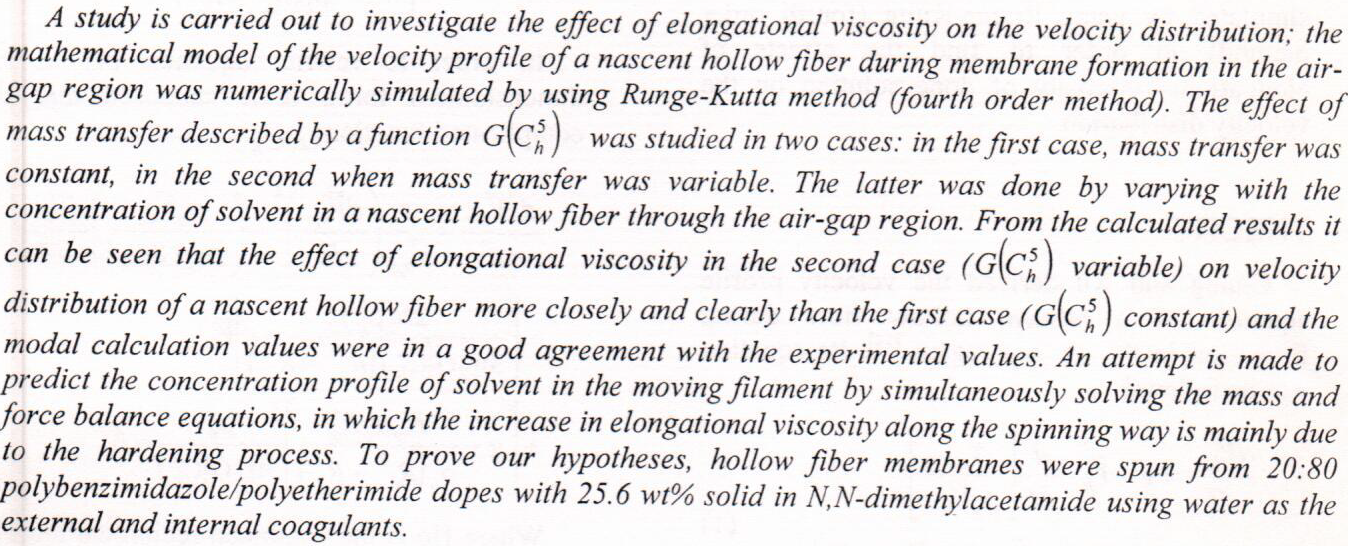
In this paper, magnesium oxide nanoparticles (MgO NPS) have been prepared and characterized and its concentration effect has been studied on polymers surface (MgO NPS). The results showed that the degradation of poly methyl methacrylate increased when using such metal oxide. The results also showed that the metal oxide increased the degradation of poly methyl methacrylate. X-ray diffraction, scanning electron microscopy, atomic force microscopy were used to study the morphological characteristics and size of nano MgO particles analysis. Films were prepared by mixing the different masses of MgO NPS (0.025, 0.05, 0.1, 0.2 and 0.4) % with a polymer solution ratio (W/V) 7 %. Photo-
... Show More (2)
(2)
 (1)
(1)
The aim of this study is to understand the effect of addition carbon types on aluminum electrical conductivity which used three fillers of carbon reinforced aluminum at different weight fractions. The experimental results showed that electrical conductivity of aluminum was decreased by the addition all carbon types, also at low weight fraction of carbon black; it reached (4.53S/cm), whereas it was appeared highly increasing for each carbon fiber and synthetic graphite. At (45%) weight fraction the electrical conductivity was decreased to (4.36Scm) and (4.27Scm) for each carbon fiber and synthetic graphite, respectively. While it was reached to maximum value with carbon black. Hybrid composites were investigated also; the results exhibit tha
... Show MorePolyacrylamide Solutions of different concentrations (0.2, 0.4, 0.6, 0.8, 1.0 %) of Ag nanoparticles and ZnO nanoparticles were prepared, the viscosities and surface tension were measured for all solutions, where measurements indicated an increase in these properties with increased concentration, where the relative viscosity of polyacrylamide/zinc nanoparticles increased from 1.275 to 2.243, and the relative viscosity of polyacrylamide/silver nanoparticles increased from 1.178 to 1.934. Viscosity is significant parameters during electrospinning process. While the surface tension of the polyacrylamide/zinc nanoparticles has changed from 0.0343 Nm-1 to .0.0.0 Nm-1 and changed from .0.000Nm-1 to.0.0.0 Nm-1. Also the constants KH and KK were
... Show More (1)
(1)
 (1)
(1)
 (1)
(1)
 (3)
(3)
 (2)
(2)
The Khabour reservoir, Ordovician, Lower Paleozoic, Akkas gas field which is considered one of the main sandstone reservoirs in the west of Iraq. Researchers face difficulties in recognizing sandstone reservoirs since they are virtually always tight and heterogeneous. This paper is associated with the geological modeling of a gas-bearing reservoir that containing condensate appears while production when bottom hole pressure declines below the dew point. By defining the lithology and evaluating the petrophysical parameters of this complicated reservoir, a geological model for the reservoir is being built by using CMG BUILDER software (GEM tool) to create a static model. The petrophysical properties of a reservoir were computed using
... Show More (4)
(4)
In many oil fields only the BHC logs (borehole compensated sonic tool) are available to provide interval transit time (Δtp), the reciprocal of compressional wave velocity VP.
To calculate the rock elastic or inelastic properties, to detect gas-bearing formations, the shear wave velocity VS is needed. Also VS is useful in fluid identification and matrix mineral identification.
Because of the lack of wells with shear wave velocity data, so many empirical models have been developed to predict the shear wave velocity from compressional wave velocity. Some are mathematical models others used the multiple regression method and neural network technique.
In this study a number of em
... Show MoreBiaxial hollow slab is a reinforced concrete slab system with a grid of internal spherical voids included to reduce the self-weight. This paper presents an experimental study of behavior of one-way prestressed concrete bubbled slabs. Twelve full-scale one-way concrete slabs of (3000mm) length with rectangular cross-sectional area of (460mm) width and (150mm) depth. Different parameters like type of specimen (solid or bubbled slabs), type of reinforcement (normal or prestress), range of PPR and diameter of plastic spheres (100 or 120mm) are considered. Due to the using of prestressing force in bubbled slabs (with ratio of plastic sphere diameter D to slab thickness H, D/H=0.67), the specimens showed an increase in ultimat
... Show MorePhlebotomus papatasi sand fly is the main vector of Zoonotic Cutaneous Leishmaniasis (ZCL) in Iraq. The aim of this study was to assess and predict the effects of climate change on the distribution of the cutaneous leishmaniasis (CL) cases and the main vector presently and in the future. Data of the CL cases were collected for the period (2000-2018) in addition to sand fly (SF) abundance. Geographic information system, R studio and MaxEnt (Maximum entropy niche model) software were used for analysis and predict effect of (elevation, population, Bio1-19, and Bio28-35) on CL cases distribution and SF occurrence. HadGEM2-ES model with two climate change scenarios, RCP 4.5 and RCP 8.5 were used for future projections 2050. The results showed th
... Show More (4)
(4)
No-fine concrete (NFC) is cellular concrete and it’s light weight concrete produced with the exclusion of sand from the concrete. This study includes the mechanical properties of lightweight reinforced by steel fiber, containing different proportions of steel fiber. This study was done using number of tests. These tests were density, compressive strength, flexural strength and absorption. These tests of the molds at different curing time. The results of tests that implication of fiber to No. fine concrete did not affect significantly on the compressive strength, While the flexural strength were gets better. Results explained that, the flexural strength of (1%) fiber No- fine concrete molds are four times that of the reference mold
... Show More (1)
(1)
